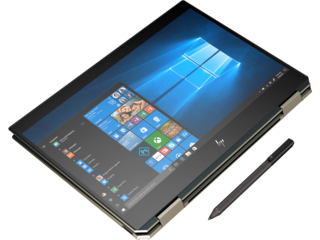
For a few years now HP has been doing its best to win over the premium consumer Ultrabook market with its Spectre series. It's working. The Spectres continually demonstrate what good design engineering can do for a company.
The 13-inch Spectre x360 is the most well-known (and popular) of the Spectre series, and its latest revision reveals a lot of good stuff. However, HP still has a few small areas where it can improve.
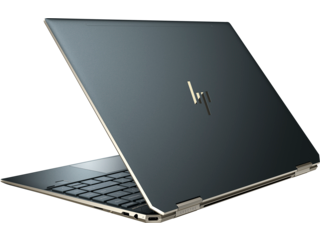
From $1,049Bottom line: The newest HP Spectre x360 13t is the sharpest looking laptop from HP yet, with excellent build quality, desired ports, features, and extraordinary battery life. It may be the best featured 13-inch 2-in-1 on the market, but its poor trackpad makes us sad. Very sad.
For
- Handsome, elegant gem-cut design.
- Excellent battery life.
- Pen included.
- Great price point.
Against
- Terrible trackpad drivers.
- Thick top and bottom bezels.
- No place to store the pen.
Like a jewel
What's new in the HP Spectre x360 13t?
The HP Spectre x360 13t's all-new "gem-cut" design brings sharp, angular edges to the metal chassis. The design is a sharp departure from the more rounded hinge area from the last model (see my review). It's especially noticeable near the back where the corners have been lopped off in favor of hard angles. That design isn't just for flare but for the Type-C port (right side) and the power button (left side). A Type-C peripheral or charging cable now clears the laptop without blocking your mouse hand, and that power button is far harder to hit accidentally when in tablet mode. It's smart engineering that happens to be eye-catching too.
Other new features include:
- 8th Gen Intel Core i7 "Whiskey Lake."
- Longer battery life.
- 4G LTE (optional).
- Gigabit Wi-Fi.
- Webcam privacy killswitch.
- Thermal control app.
- Fingerprint reader on deck.
New 'gem-cut' design brings sharper edges to the chassis.
HP claims the dual chamfer edges also make the lid easier to lift no matter which side you're opening it from. The design detail even filters down to the speaker holes, which HP claims have been drilled in a specific pattern meant to boost "acoustic transparency." This generation also includes a stylish new color, called "Poseidon blue," with brass accents, adding to the dark ash silver available on previous models.
This new Spectre is slightly thicker (14.5 mm compared to last year's at 13.6 mm) and heavier (2.9 lbs versus 2.85 lbs), but the difference is barely noticeable, and it lets HP get better thermal dissipation, more performance and increased battery life.
HP Spectre x360 13t tech specs
| Category | Spec |
|---|---|
| Processor | 8th Gen Intel Core i5-8265U8th Gen Intel Core i7-8565U |
| RAM | 8 GB, 16GB |
| Storage | PCIe NVMe SSD256GB, 512GB, 1TB, 2TB |
| Display size | 13.3 inchesTouch |
| Display resolution | 1920 x 10801920 x 1080 w/ Sure View Privacy Screen4K UHD (3840 x 2160) |
| Pen | Yes (N-trig)Included |
| Graphics | Intel UHD Graphics 620 |
| Ports | Two Thunderbolt 3Two USB Type-C 3.1 Gen 2USB 3.1 Type-A Gen 2Micro SD card3.5mm headphone jack |
| Wireless connectivity | Intel Wireless-AC 9560 802.11b/g/n/ac Gigabit Wi-Fi and Bluetooth 5 ComboOptional 4G LTE |
| Biometrics | IR camera for Windows Hello |
| Security | Fingerprint readerTPMPrivacy camera kill switch |
| Battery | Up to 22.5 hours |
| Dimensions | 12.16 in x 8.58 in x 0.57 in |
| Weight | 2.92 lbs |
HP also updated the processor to the latest Intel 8th Generation 15-watt Core i7 processor, offers optional 4G LTE support, Gigabit Wi-Fi, and the company moved the fingerprint reader from the side to the top deck.
The display bezels are now 5.7 percent thinner than the last model (though they're still rather large on the top and bottom).
All those changes add up to make this Spectre x360 an ambitious refresh to HP's premium Ultrabook line.
getting the basics right
HP Spectre x360 13t screen, keyboard, and audio
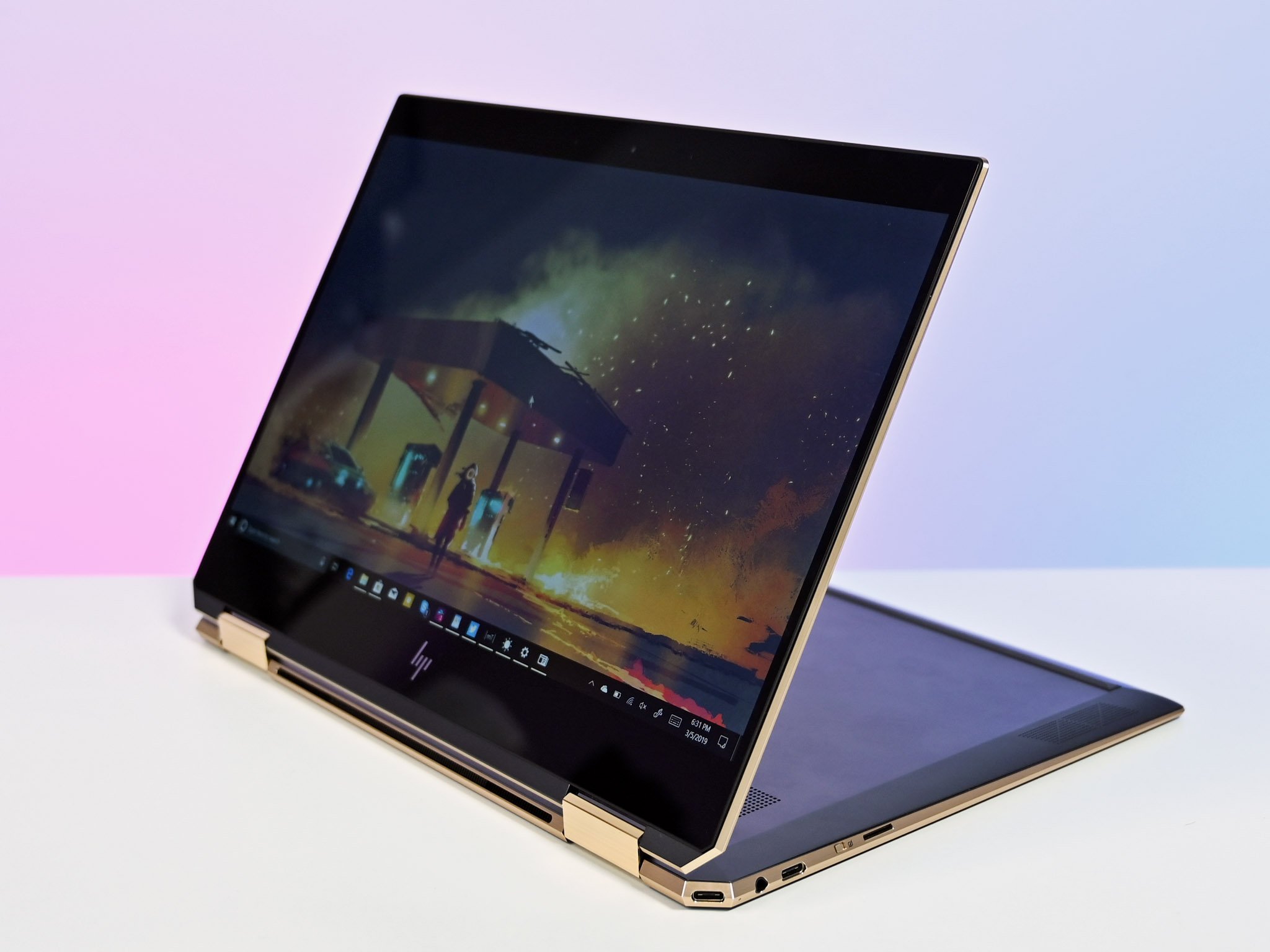
The Spectre x360 13t's 13.3-inch full HD display is one of the better ones we've tested. With around 320 nits of brightness and 98 percent, sRGB color accuracy the tones and balance look great. Like other HP models there are options for a 4K panel – which while looking great is likely overkill for many – and HP's new privacy screen dubbed Sure View.
About those thick top and bottom bezels ... HP insists on putting the Wi-Fi and Bluetooth antennas at the top for best reception, but as a result, the bezels are unusually large for a premium Ultrabook in 2019.
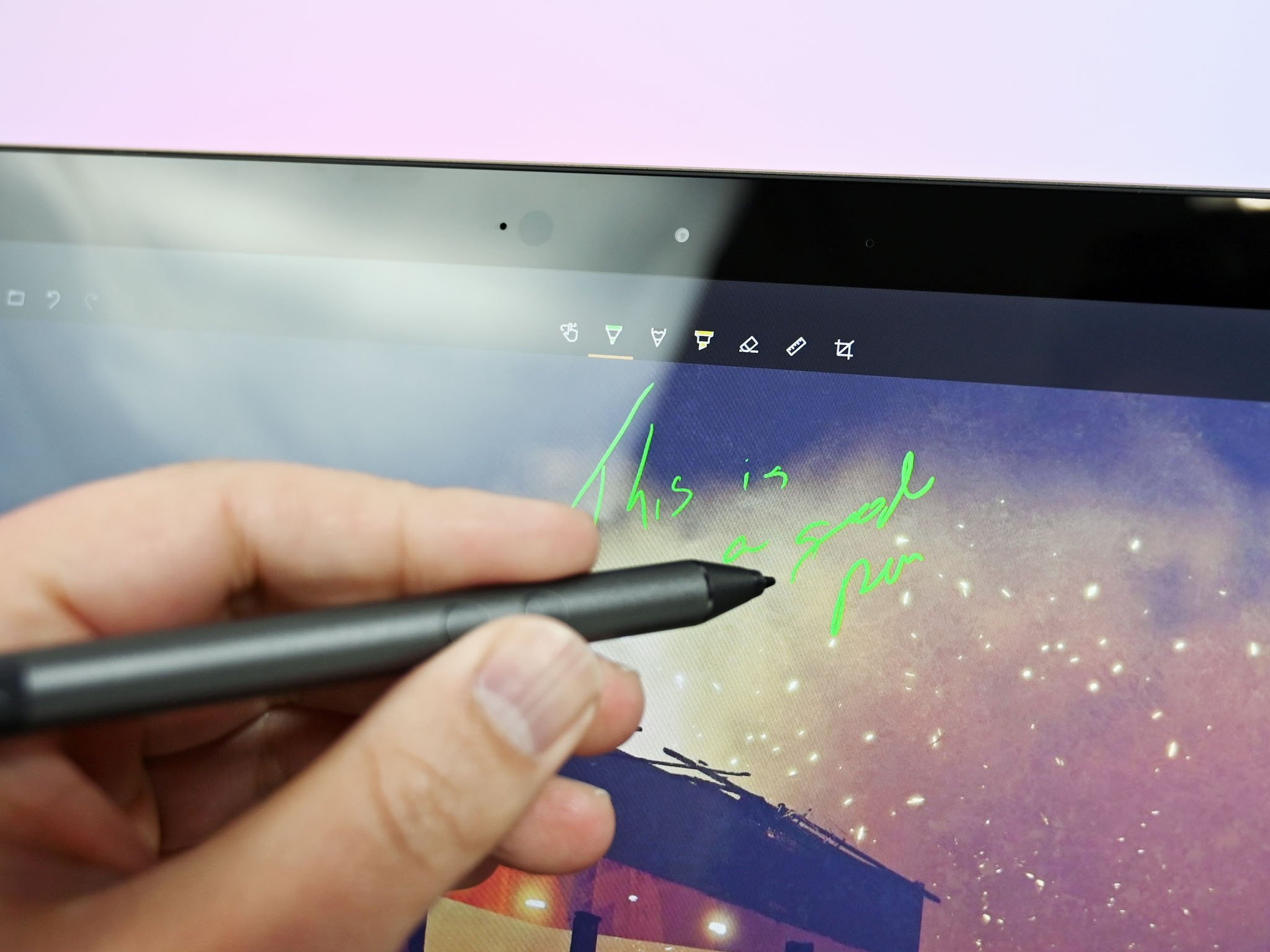
The included pen for inking is N-trig based (versus Wacom), and it works quite well for casual use. However, there is no storage or magnets for the pen, which makes traveling with it a bit tricky.
HP still makes some of the best and "crispiest" keyboards on the market for Ultrabooks. With large chicklet-style keys with pleasant spacing, the Spectre x360's keyboard has ample travel. The keyboard is also edge-to-edge with a dedicated home row on the right-hand side. This keyboard is arguably one of the best around, only slightly bested by the softer, plusher Surface Laptop 2.
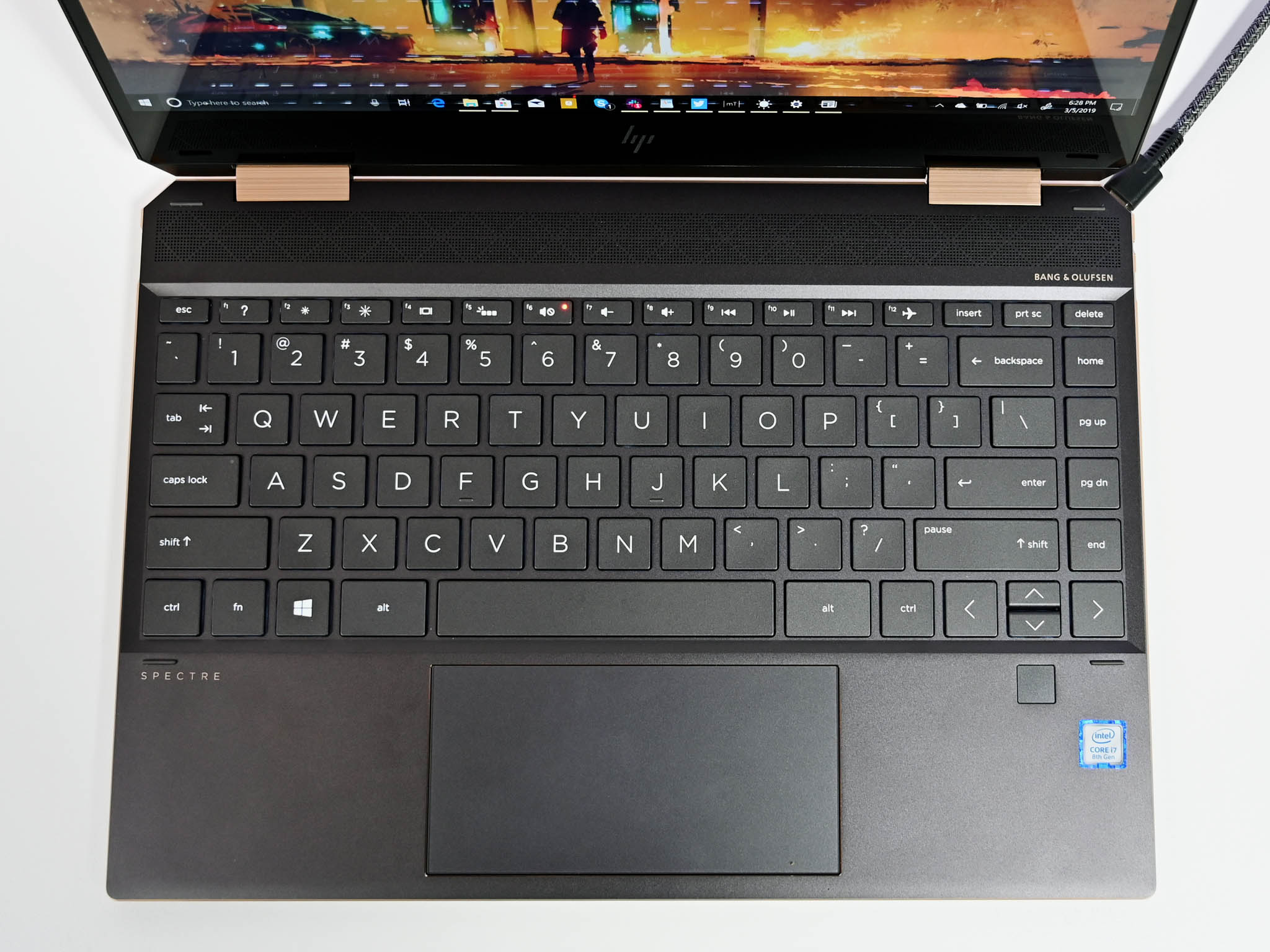
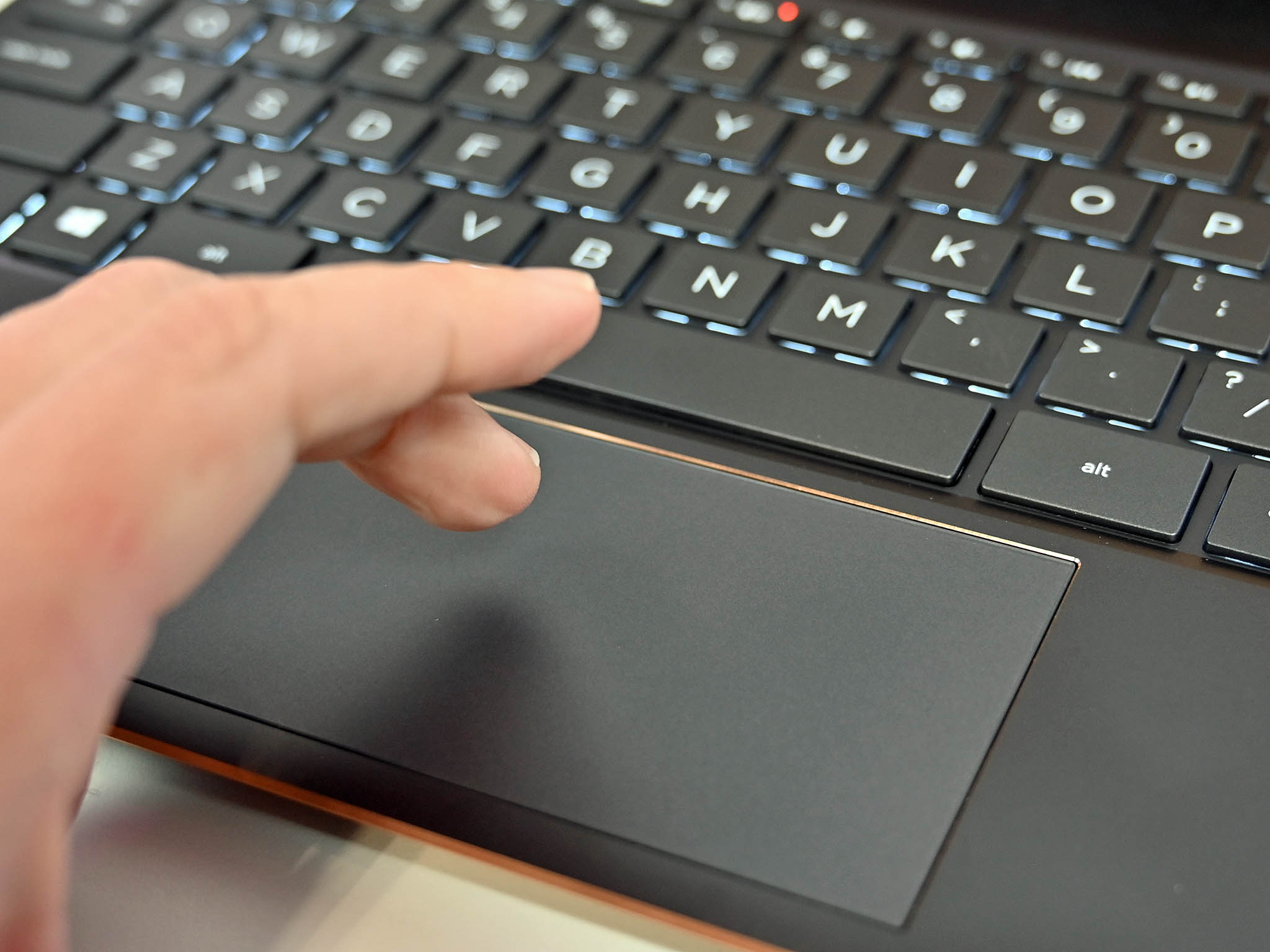
Audio is excellent. HP recently started to use a quad-speaker array in its premium business (EliteBook) and consumer (Spectre) series of laptops, with much success. The software is tuned by Bang & Olufsen as has been the case for years now. Two of the speakers are placed behind the keyboard near the display with two more underneath the front of the laptop, near the edge. Such placement lets the audio bounce off the screen and back at the user, delivering crisp sound. But it could be improved with more bass and resonance. The two speakers on top and two on the bottom mean that when used as a tablet or in tent mode you have a better chance for consistent sound.
HP Spectre x360 13t audio is excellent.
The trackpad is where things go sour for the Spectre x360 13t. The hardware and design with the gold trim are excellent. Smooth glass, large elongated design, and a satisfying click all work in favor of the 13t. But it's betrayed by the shoddy Synaptics software drivers that power it. The continued omission of Microsoft Precision drivers is a blight that HP needs to rectify. Scrolling can be janky and pinch to zoom wildly inconsistent, and such an egregious oversight in 2019 nearly ruins the whole experience of the Spectre x360 13t.
powerhouse Ultrabook
HP Spectre x360 13t performance
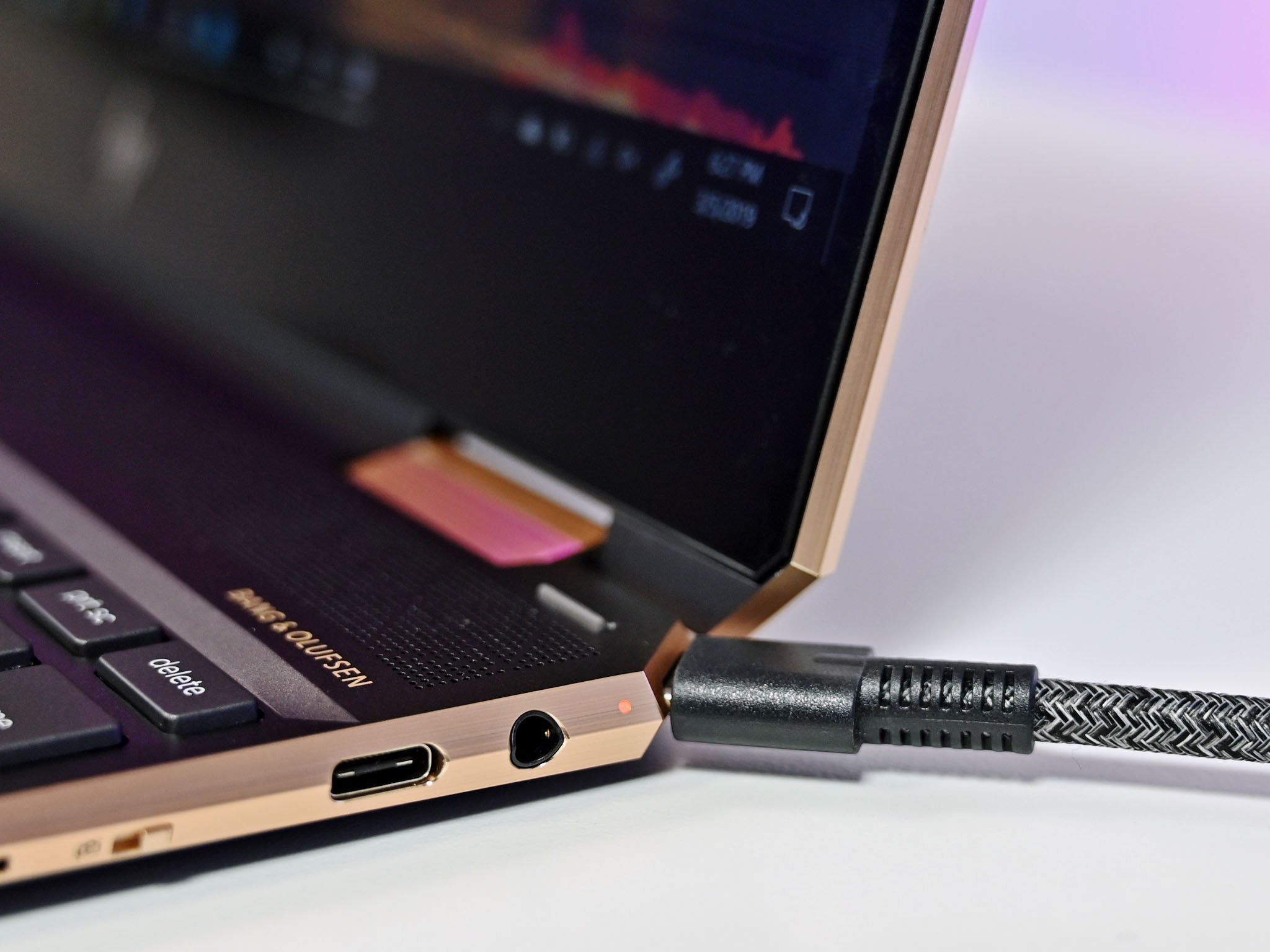
The Spectre x360 13t uses a familiar Intel Core i7 8565U processor, but it can also be configured with an Intel i5-8265U. Both are the latest from Intel, are quad-core, and 15-watt regular Ultrabook processors.
In the past, HP has caught flak for having less than stellar thermal management, but most of that is addressed with this version. Heat and fan noise are reduced partially because of the use of smaller dual-fans instead of one larger single one. HP for the first time is also including thermal management software, called HP Command Center. The simple app lets you toggle between different power modes, which then affects the heat dissipation amount and fan-noise levels. It's good software and something the company should carry over to its business-themed EliteBook range.
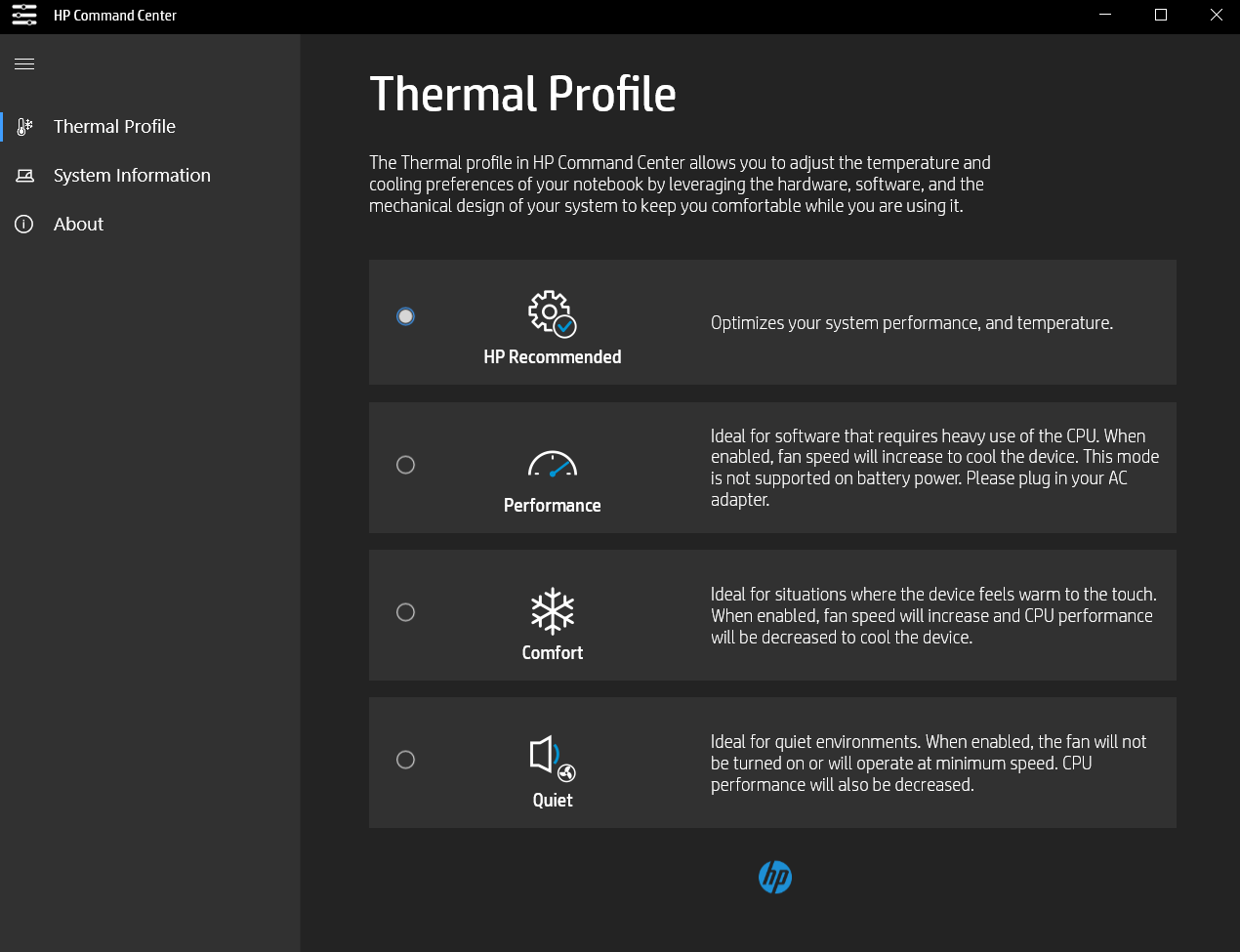
There is no dedicated GPU in such a thin device, but the Intel UHD 620 gets the job.
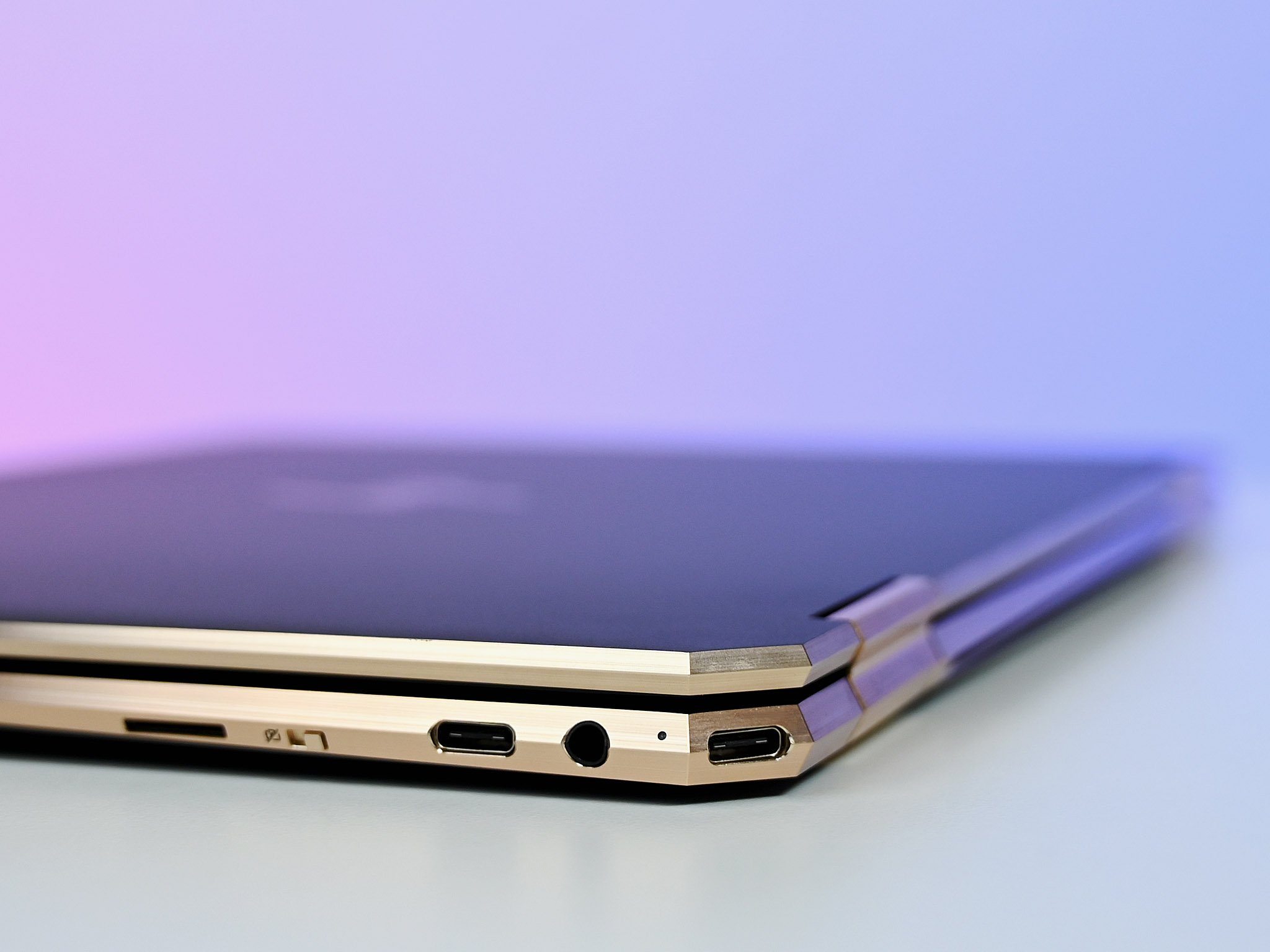
Performance is in line with similar laptops although Huawei today is pushing its processors harder than HP, which results in slightly better benchmarks.
CPU
Geekbench 4.0 Benchmarks (Higher is better)
| Device | CPU | Single core | Multi core |
|---|---|---|---|
| HP Spectre x360 13t | Core i7-8565U | 5,056 | 14,767 |
| Huawei MateBook X Pro (new) | Core i7-8565U | 5,192 | 16,757 |
| Huawei MateBook 13 | Core i7-8565U | 5,336 | 17,062 |
| Surface Laptop 2 | Core i5-8250U | 4,203 | 13,233 |
| Surface Laptop | Core i7-7660U | 4,714 | 9,535 |
| LG gram 14 2-in-1 | Core i7-8565U | 4,829 | 13,889 |
| LG gram 17 | Core i7-8565U | 5,161 | 13,370 |
| Lenovo Yoga C930 | Core i7-8550U | 4,787 | 15,028 |
| Dell XPS 13 (9370) | Core i7-8550U | 4,681 | 14,816 |
| Lenovo Yoga C630 (ARM) | SD850 | 2,287 | 7,215 |
GPU
Geekbench 4.0 CUDA (higher is better)
| Device | GPU | Compute score |
|---|---|---|
| HP Spectre x360 13t | UHD 620 | 37,487 |
| Huawei MateBook X Pro | MX250 | 45,365 |
| Huawei MateBook 13 | MX150 | 48,430 |
| Surface Laptop 2 | UHD 620 | 35,473 |
| Surface Laptop | Iris 640 | 31,010 |
| Samsung Notebook 9 15 | MX150 | 48,536 |
SSD
CrystalDiskMark (Higher is better)
| Device | Read | Write |
|---|---|---|
| HP Spectre x360 13t | 3,085 MB/s | 1,182 MB/s |
| Huawei MateBook X Pro (new) | 3,416 MB/s | 2,779 MB/s |
| Huawei MateBook 13 | 3,436 MB/s | 2,553 MB/s |
| LG gram 14 2-in-1 | 558.1 MB/s | 523.1 MB/s |
| Lenovo Yoga C930 | 2,596 MB/s | 806 MB/s |
| Lenovo Yoga 730 13 | 2,790 MB/s | 506 MB/s |
| Lenovo IdeaPad 730S | 3,450 MB/s | 1,463 MB/s |
| Lenovo Yoga C630 | 791 MB/s | 220 MB/s |
| ASUS ZenBook S | 550 MB/s | 512 MB/s |
| ASUS ZenBook 15 | 1,725 MB/s | 1,447 MB/s |
HP is using a newer Western Digital SSD with good results. Our model has a 256GB drive with excellent speeds.
Nary a flaw
HP Spectre x360 13t is (almost) perfect

You could argue that HP almost over-engineered its new Spectre series of laptops. The designs are unique, but also pragmatic and functional. The attention to detail for the buttons and design is to be commended.
One of the most elegant 2-in-1 PCs in this price range.
New features like the privacy killswitch for the web camera are welcomed. Sticking with Windows Hello for facial recognition and a fingerprint reader is a good choice. The performance and overall feel of the laptop are among the best we've tested.
Battery life is rated at a crazy 22 hours by HP, but the real-life experience is more like ten hours or slightly more, which is still outstanding. Port selection, features, and audio are also all well above average.
Even the starting price of $1,050 for a Core i5 configuration with 8GB of RAM and 256GB of storage is good enough for most regular consumers. For that price, they will be treated to one of the most elegant 2-in-1 PCs around.
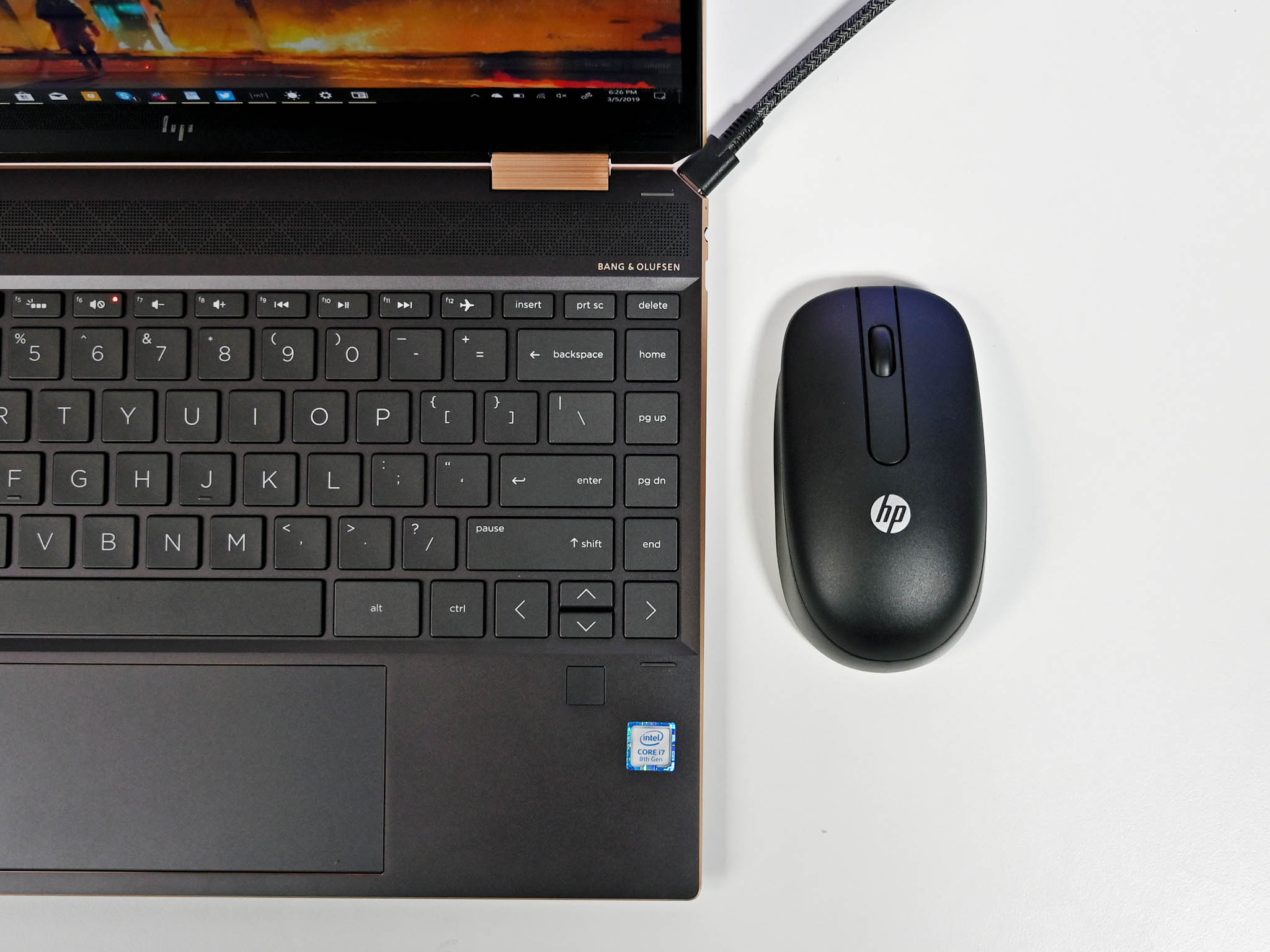
HP even lets users configure a model with 4G LTE. When combined with the slim, light body, and all-day battery life, that's a winning combination.
But some of that is betrayed by HP's insistence on using Synaptics drivers for the trackpad and the rather huge top and bottom display bezels. While simply navigating Windows and using apps like Office feel OK on the trackpad, using apps such as Twitter, GroupMe, or the Edge browser while scrolling and using pinch-to-zoom can be wildly janky. There's no excuse for this, as those Synaptics drivers do not offer a single benefit to the consumer when compared to Precision drivers. HP is one of the last PC makers to stick with Synaptics, and it's unacceptable in 2019.
That blemish is unfortunate because HP is making outstanding hardware, only to trip on such a simple detail like the trackpad. While I believe many users can live with the Spectre's trackpad, it's the one thing that keeps me from using one of these PCs as my daily laptop.

Daniel Rubino is the Editor-in-chief of Windows Central. He is also the head reviewer, podcast co-host, and analyst. He has been covering Microsoft since 2007 when this site was called WMExperts (and later Windows Phone Central). His interests include Windows, laptops, next-gen computing, and wearable tech. He has reviewed laptops for over 10 years and is particularly fond of 2-in-1 convertibles, Arm64 processors, new form factors, and thin-and-light PCs. Before all this tech stuff, he worked on a Ph.D. in linguistics, performed polysomnographs in NYC, and was a motion-picture operator for 17 years.

